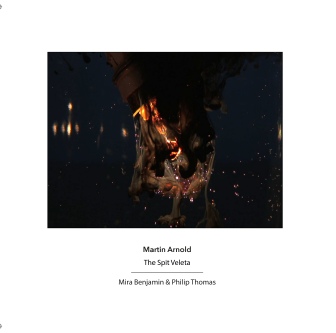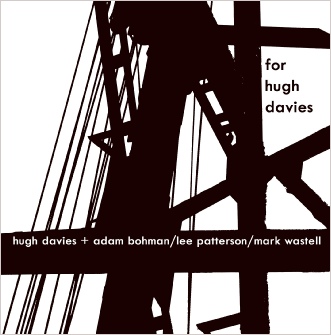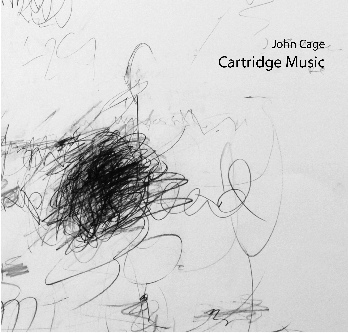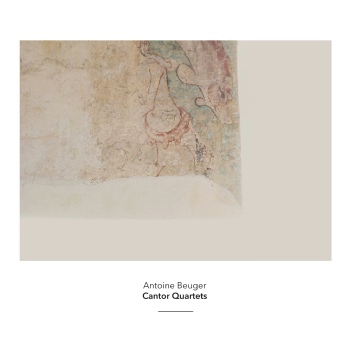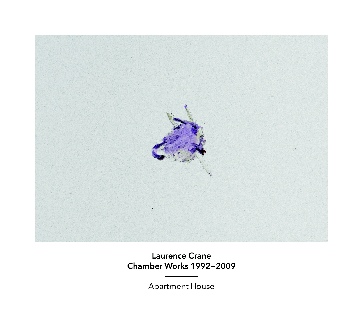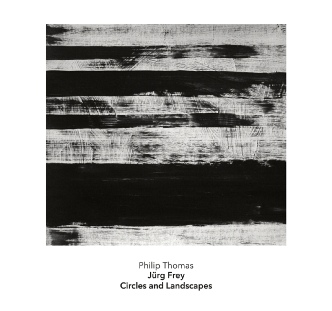Another Timbre TimHarrisonbre
‘No More Old Rules’
Profile of Another Timbre at 10 years old, by Abi Bliss,
published in ‘Sounds Like Now’, July 2017:
https://www.soundslikenow.net/no-old-rules/
‘You could say on a surface level that there’s an emphasis upon a certain kind of beauty, towards the sublime almost’, begins Philip Thomas when asked if he hears a shared aesthetic in records released by the Another Timbre label. ‘But I think that would be to miss the point.’
Reflecting on an recording partnership that spans from his 2009 album The Middle Distance – a rare, purely improvised outing for the pianist with Chris Burn and Simon H. Fell – to the recently released The Split Valeta, a pairing with violinist Mira Benjamin for works by Canadian composer Martin Arnold, Thomas continues: ‘There’s also a strangeness about it, a re-evaluation of things that until recently have been more on the outskirts of new music.
‘There’s an accessibility about some elements. Yet it’s very inquisitive music; it’s music that doesn’t quite settle. There’s an elusive, fleeting quality to it that I like. I love music that makes me tilt my head in some way.’
Founded by sound recordist Simon Reynell and celebrating its 10th anniversary this year, Another Timbre’s catalogue is now firmly into triple figures. Back in 2007, its fifth release was Endspace, a collaboration with Tisha Mukarji that marked one of the first major recordings for the violinist Angharad Davies. Like Thomas, the twist and turns of Davies’ career are also entwined with those of the Sheffield-based label.
‘Simon has been a steady champion of my music’, she enthuses. ‘As well as the label reflecting how his interests and tastes have changed since he first founded the label, he has equally adapted to the evolution of my own music.’
She adds, ‘He is always inquisitive of new collaborations and situations that I find myself in and this quiet, gentle presence, comment and encouragement cannot be underestimated. I am sure he extends this to all musicians on his label and is therefore not only building an incredible document of the music of our time, but is a custodian of a community’s creativity.’
The list of musicians and composers who have been released on Another Timbre – including John Tilbury, both Davies and her brother Rhodri Davies, Apartment House, James Saunders, Lee Patterson, Annette Krebs, Jürg Frey – is a testament to the respect and admiration Reynell’s label has gained over the last decade. Not bad for a project conceived as an antidote to middle-aged discontent, as Reynell explains when I meet him at his home.
Located on a street of interwar semis in one of Sheffield’s famously hilly suburbs, Reynell’s house shares with its neighbours terrific views over the city. Chances are, however, that few of those have stacks of freshly pressed CDs featuring some of Canada’s finest contemporary composers on the kitchen worktops, nor a hallway stuffed with instruments from musicians Isaiah Ceccarelli and Katelyn Clark, currently visiting from Victoria, British Columbia.
‘A couple of things happened that set it off’, Reynell says, explaining how a lifelong music fan with no previous industry connections came to found a record label in his 50s. ‘My kids grew up and started leaving home, so the amount of headspace I had suddenly expanded hugely.
‘The other thing was that I was earning my living working on television documentaries and I was getting more and more pissed off with the quality of documentaries on UK television. I kept grumbling, and my partner said to me, “You’ve got to do something else; you come home and you’re just unhappy all of the time.”’
And so Another Timbre was born with a batch of five initial releases, catalogue number 01 going to The Contest of Pleasures by Tempestuous, the trio of John Butcher, Xavier Charles and Axel Dörner. Appropriately enough, their set at the 2006 Huddersfield Contemporary Music Festival was captured as a storm raged outside. And with that, contentment was restored to Reynell’s household. ‘I still do television work to pay the bills, but because I know that it’s funding the rest of my life, I no longer feel pissed off’, he laughs.
Contemporary composition featured from the start, with another of the label’s initial five albums being Music for Shakuhachi, composed by Frank Denyer. Yet Reynell acknowledges that his primary focus in the early days was on improvisation, partly driven by a sense of growing urgency.
‘Hugh Davies and Derek Bailey, two of my favourite musicians, had died shortly before I started the label. These people who were my early heroes in music are starting to die off, so one side of it was simply to try to document people before their music was lost’, he recalls.
Once word got out about the label, Reynell soon found himself with a steady stream of suggestions for artists to record, often from other musicians. Yet his role on this front wasn’t purely passive, explains Angharad Davies: ‘I think he opened up free improvisation in that he was instigating quite a lot of different collaborations, which made it interesting at the beginning and perhaps quite new.’
While Thomas remembers Reynell being a familiar face among Sheffield audiences in the 1990s, where musicians such as saxophonist Mick Beck energised a thriving free improvisation scene, Reynell rejects the widespread notion that such music is inherently ephemeral and best enjoyed as an unrepeatable live experience.
‘Although there is an improvised music scene in Sheffield, taste-wise I’ve always sort of been on the edges of it’, he explains. ‘So for me really, improvised music has always been about the discs that result from it rather than the performance itself. Which is kind of wrong, but living outside the metropolis, that’s how it’s had to be. Recordings have always been my key way into things.’
The name ‘Another Timbre’ may originally have been a nod to the spontaneous sounds that fed its roots, but it could equally apply to how, over time, the label has cultivated a distinctive sonic signature. ‘Simon’s method of recording is quite scary’, says Thomas. ‘It’s very close miked and that’s not normal in more conventionally classical records.’
‘He really loves to get into the grain of the instrument. So the microphone’s right up inside the piano, and you can hear every pedal noise, every key noise, every damper noise. But there’s something about the way he does that which is also very brave; it gets into the sound in a really rich and complex way.’
Davies is also a fan of Reynell’s recording technique: ‘It certainly helps with the kind of sounds that I explore, because they’re often very fragile, so having a close mic is really great for magnifying what I’m hearing’, she explains. ‘If it wasn’t recorded closely, there’d be a lot of detail lost, so it suits my palette of sound.’
‘I find it almost impossible to listen back to any of my recordings’, Thomas adds. ‘I feel that my every minutiae of technical variance is exposed. But that’s good: we’re human beings, not machines.’
Although it may have become a prized characteristic, Reynell is the first to admit that his close-miked style partly arose out of necessity. Without the budget to hire professional studios for every album, he’s recorded in concert halls, churches, artist’s studios – and on the day we meet, in the living room of his mother’s house, just a few streets away from his own.
Silence, he feels, isn’t always a prerequisite. ‘There are some pieces that you really need to record in silent spaces and others that can be enhanced by having bits of rough noise around the edges. I’ll pick a different place to record them largely on the basis of that assessment’, he explains.
Davies has fond memories of the draughty church where she and Tisha Mukarji recorded ffansïon|fancies, their second album together: ‘There was a lot of wind blowing through the church, which really influenced the structure of the piece ffansi iv’, she recalls. ‘There are breaks in the sound as if it’s not going anywhere, but that the space was being filled by the wind.’
At Julia Reynell’s house, Ceccarelli and Clark are joined by Patrick Farmer and Ryoko Akama, both currently based in Yorkshire, recording their interpretation of a graphic score by Canadian visual and sound artist Lance Austin Olsen for a CD of his music scheduled for later this year. Their performance serves as a complement to one already made in London by Apartment House using the same source – an image of Olsen’s work Theseus’ Breath.
Not originally conceived as a graphic score, the painting leaves much scope for individual interpretation, from how to divide up its criss-crossing brushstrokes and paint drips between the musicians, to the question of whether everyone should start with the image facing the same way or not. While they discuss, Reynell busies himself setting up the microphones, positioning them with a fuss-free confidence born out of his years of experience.
An impeccably polished piano in the room betrays Julia’s own keen musicianship, but the instrumentation here is considerably more diverse: Clark’s is the most eye-catching with her organetto, a lap-sized pipe organ of fourteenth-century origin, fine-tuned with small rolls of parchment. Ceccarelli switches between percussion and miniature reed organ; Akama alternates between melodica and a range of small objects agitated to repeated rhythms by a turntable, while Farmer contents himself with coaxing a variety of juddering textures from the bowed edges of paper and card.
After recording five varied takes, the musicians pack away and Julia emerges to offer tea and homemade fruit cake. She surveys the aftermath of her son’s pursuits with a tolerant smile. ‘I like to think of it as sound rather than music’, she says, a wry summation of what must be decades of teatime discussion.
‘I’ve been a fan of contemporary music since I was a teenager, so that’s going back to 1973, ’74, when I started listening to Berio, Stockhausen and stuff like that’, Reynell recalls. ‘But it was always a very private thing. For ages and ages, music for me was what I played in my bedroom, and I would be banished there because nobody else wanted to listen to the records.’
At a time when many of his peers would have been entranced by prog rock, the LPs on offer in Bradford’s main library promised young Simon a different type of mind-expanding experience. ‘As a radical teenager, I bought in to the modernist idea that we’re clearing away history and making a new kind of music’, he says.
‘I don’t agree with that now but that was what I believed. It felt very countercultural – people like Nono and Berio were quite political and Derek Bailey was moving in socialist circles. So that was part of the appeal: it felt like an alternative radical home.’
Reading John Cage’s Silence was also formative. ‘I think I was open to it to a fault; I didn’t want to have to think about the contradictions of it’, he laughs. ‘He’s still a massively important person for me, but I’m more critical of it now. But certain parts are still influential: the idea that music could be anything and that there’s no such thing as silence, there are no clear divisions between sound, noise, music; those are just tags which are put on through cultural convention.’
As might be expected from any label run as a one-person operation, Reynell knows that his individual taste is crucial to Another Timbre’s character. ‘I’m very sure that the label’s only going to work if it does quite narrowly follow my taste, because that’s what gives it its identity and the people who do buy the discs know what they’re getting.
‘Unlike, say, the NMC label, where they feel they have to represent British contemporary composers in general, I just look around and see things that I like. It’s a lot of work and there’s no point if I’m not totally behind the music’, he says.
It would be foolish to second-guess Another Timbre, however. After all, even Reynell didn’t anticipate how, once the label was established as being chiefly concerned with improvisation, the balance would tip sharply back the other way. ‘I didn’t envisage the shift in focus of the label’, he admits. ‘It started off being 80 per cent improvisation and 20 per cent contemporary classical and that’s now been reversed.’
Reynell identifies the turning point as the 2012 release of Wandelweiser und so weiter, an ambitious six-CD box set featuring works by key figures in the movement such as Antoine Beuger, Michael Pisaro and Jürg Frey, and performed by a wide-ranging cast including the Davies siblings, Thomas, Farmer, Patterson and many more.
‘The primary emphasis when we started was on post-reductionist improvisation. Looking back, I got in on the tail-end of that, as its most interesting time had happened around the turn of the century. Something else had to come in, otherwise the label was just going to peter out. For me, that was Wandelweiser.’
He continues: ‘To my surprise, the Wandelweiser box set was very successful in terms of sales and critical reception. I’d thought it might finish the label, because it was quite expensive to put together and I didn’t know whether it would sell, but it did.’
The aesthetic steps from Cage’s silences to post-reductionist improvisation to Wandelweiser may not seem all that daunting. But what came next heralded a more profound evolution of Reynell’s sensibilities.
‘I could have become just another Wandelweiser label, in a way, because I love that stuff. But I thought that I can’t just repeat what I’m doing, it’ll run out of energy’, he explains. ‘So I had a period of looking around and thinking, and the next really significant release was the Laurence Crane double CD, Chamber Works 1992–2009. That was a first attempt to engage with melody and harmony, which up until that point had been secondary in my thoughts.
‘I spent a lot of time editing Laurence’s pieces and got to know them absolutely inside out and backwards. After spending about 18 months on them, what I found when going back to working on other music, was that if it was purely timbral, previously that would have been fine, but after having engaged with Laurence’s music in such a deep way, I felt it wasn’t going to excite me as much now as music that was experimental and bold but was also doing things with melody and harmony.
‘Really, the history of the last four or five years of the label has been exploring that strand: composers who have been through the Cagean shake-up of everything. Whereas the traditional modernist thing was to sweep aside those parts of music and almost see them as reactionary, they’re saying, well what can we do with melody and harmony now that we don’t have to play by the old rules? That’s pretty much where I am’, he concludes.
Which brings us to Another Timbre’s chief focus for its anniversary year: a series of 10 releases – five back in February, five scheduled for the end of 2017 – from contemporary Canadian composers including Ceccarelli, Olsen, Linda Catlin Smith, Martin Arnold and Cassandra Miller: names that, for Reynell, navigate enticing routes between his longstanding and newer interests.
‘I think a factor that makes them attractive to me is that Canada’s position is neither quite in the European avant-garde nor in the experimental US tradition based around Cage; they’ve picked aspects from both of those traditions and each composer produces a unique amalgam’, he points out. ‘They’re quite strongly individual voices; there’s not a Canadian “school”.’
Thomas, for one, is enthusiastic about performing Arnold’s music with Mira Benjamin on The Split Valeta: ‘When I first played a piece by him a year ago I just intuitively fell in love with it; it felt like music that I was born to play. It’s a great sensibility of harmony, of melody. He has such a great sensitivity to line. There’s a slightly jazzy folk element to it, too. It’s very much a music made to be played by people; a human music’, he enthuses.
Davies, meanwhile, selects Smith’s earlier Another Timbre release Dirt Road – performed by Benjamin and percussionist Simon Limbrick – as one of her all-time favourites from the label: ‘It’s extremely intimate, there is nowhere to hide and it’s beautifully played. Linda’s writing is not afraid of exploring stillness. I liked the compositional structure and where the violin writing was taken; it’s surprising but makes total sense’, she says.
As for the 10th anniversary of Another Timbre itself and the label’s current position as both a document and an influencer, Reynell is typically modest. ‘I’m always appraising the label; about three times per year I go through thinking, “Oh god, this has got to stop”; those kind of ups and downs’, he says.
‘I feel the label has succeeded in making an impact within the contemporary classical music world and it’s pretty well known now. Breaking into that was a harder and longer process than breaking into the improv world, and having done that, I feel fairly confident that it’s in a good place and should survive for at least the next 18 months.’
However, he won’t be drawn on whether the prospect of a second decade entices or horrifies him. ‘In another 10 years I’ll be 70, so that’s picturing it far too far, especially as the generation who buy CDs are also all getting older. But I’d be surprised if I wasn’t still just about doing it in five years’ time.’
‘That might be a good time to call an end to it, before the people who buy CDs really do die out!’ he laughs.”
Abi Bliss, Sounds Like Now, July 2017
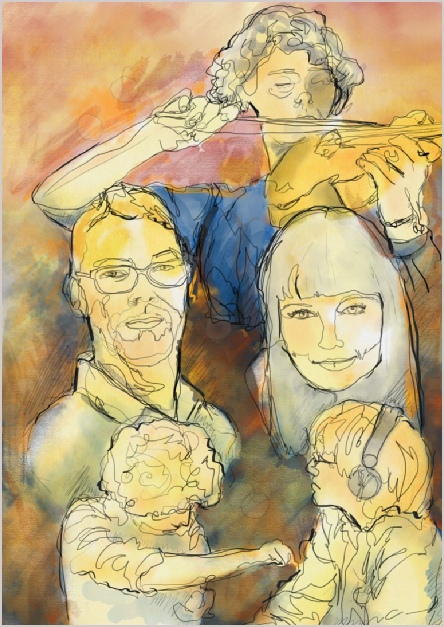
Image from Sounds Like Now, July 2017
